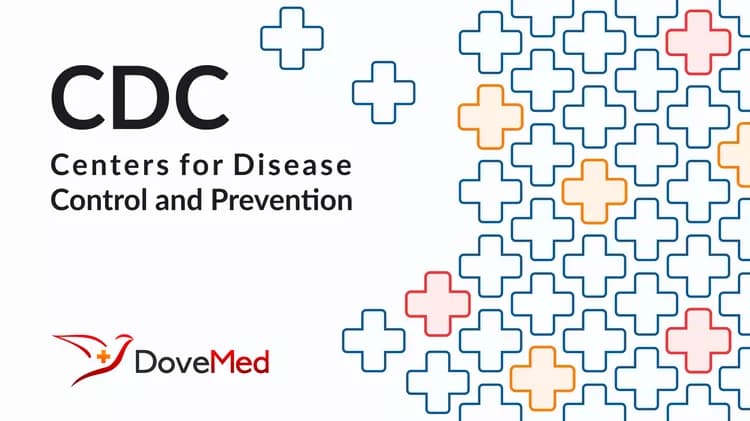
Cryptosporidium Has Been Found In Oysters Harvested From The Chesapeake Bay
CDC Releases Two State-Specific Tobacco Reports
The Centers for Disease Control and Prevention (CDC) today released two state-specific reports on tobacco use, one highlighting the severity of the public health problem and the other presenting a science-based blueprint for solving it. The two reports, State Tobacco Control Highlights, 1999 and Best Practices for Comprehensive Tobacco Control Programs was officially released today at the fifth annual National Conference on Tobacco and Health in Kissimmee, Florida.
According to CDC data, tobacco use is responsible for more than 430,000 deaths each year, or one in every five deaths, and is the leading preventable cause of death and disease in our Nation. Studies have shown that an estimated $50 billion to $73 billion is spent nationally each year on treating smoking-related illnesses such as lung cancer, chronic lung disease, coronary heart disease, and stroke. Currently, states spend a tiny fraction of this amount on effective tobacco control programs to reduce and prevent tobacco use. CDC estimates that states need to spend between $8 billion and $21 billion over the next five years to implement effective tobacco control programs.
The first report, State Tobacco Control Highlights, 1999, summarizes information on tobacco use in all 50 states and the District of Columbia. It is an update of a publication first released in 1996 and presents current state-based information on the prevalence of tobacco use, tobacco control laws, the health impact and costs associated with tobacco use, and tobacco agriculture and manufacturing. The report shows, for example, that:
State-specific smoking prevalence among adults varies more than twofold, ranging from a low of 13.7 percent in Utah to a high of 30.8 percent in Kentucky.
Current smoking among young people (grades 9-12) ranges from 16.4 percent in Utah to 47.0 percent in Kentucky, more than a threefold difference.
Smoking-related death rates are more than twice as high in Nevada (469 deaths per 100,000 population) as in Utah (188).
The medical care expenditures attributed to smoking varies dramatically among states, ranging from $5.3 billion in California to $71.2 million in Wyoming.
Among states with laws that restrict smoking in private work sites, only California meets the nation's Healthy People 2000 objective to eliminate nonsmokers' exposure to environmental tobacco smoke.
State excise taxes on cigarettes range from a low of 2.5 cents per pack in Virginia to a high of $1.00 per pack in Alaska and Hawaii.
"This report is extremely useful because it allows public health workers and policy makers at the state level to compare their data with that of other states using comparable measures," said CDC Director Dr. Jeffrey Koplan. "These data provide the most current evidence that tobacco use places a tremendous health and economic burden on every state in the nation."
The second report, Best Practices for Comprehensive Tobacco Control Programs, provides states with recommended strategies and funding levels for effective programs to prevent and reduce tobacco use, eliminate the public's exposure to secondhand smoke, and eliminate disparities related to tobacco use and its effects among different population groups. CDC provided a draft version of the report to the states in 1998 to help guide their decisions about the use of funds from last year's master settlement agreement with the tobacco industry.
The Best Practices guidelines address nine components of comprehensive tobacco control programs: community programs, chronic disease programs (e.g., heart disease prevention, cancer registries) to reduce the burden of tobacco-related diseases, school programs, enforcement, statewide programs, counter-marketing, cessation programs, surveillance and evaluation, and administration and management. For each component, CDC presents a range of funding levels for each state to consider based on needs and priorities in that particular state.
CDC estimates that the annual costs to implement all of the recommended program components range from $7 to $20 per capita in small states to $5 to $16 per capita in large states. For the average state, total recommended program costs would range between $31 million (lower estimate) and $83 million (upper estimate) each year.
"Considering that the states will receive a combined amount of nearly $41 billion over the next five years from their settlements with the tobacco industry, the mid-range of our funding estimates ($14.5 billion) would account for about a third of the resources that will be available to states," said Dr. Koplan. "The sad fact remains, however, that most states have not earmarked significant settlement funds for tobacco control, and no state is currently implementing all of the recommended program components fully."
Dr. Michael Eriksen, director of CDC's Office on Smoking and Health (OSH), said that State Highlights and Best Practices present the two sides of the tobacco control story. "The bad news is that tobacco use continues to be the leading preventable cause of death in our country. The good news is that we clearly know what effective prevention programs should look like. So now our challenge is to translate this knowledge into action for the health of the citizens of every state," Dr. Eriksen said.
Beginning September 30, 1999, the CDC will fund the tobacco control programs in all 50 States, the District of Columbia, and the Territories. "This effort, which we are referring to as the National Tobacco Control Program, is intended to provide funding and technical support to States and will serve as a building block for coordinated national tobacco control efforts to reduce tobacco-related diseases and deaths today and into the next millennium," Dr. Koplan said.
Copies of State Highlights and Best Practices are available free of charge from the Office on Smoking and Health, 770-488-5705 (press 2 for publications). Links to online versions of both documents are located at OSH's Web site, http://www.cdc.gov/tobacco.
###
U.S. DEPARTMENT OF HEALTH AND HUMAN SERVICES
Related Articles
Test Your Knowledge
Asked by users
Related Centers
Related Specialties
Related Physicians
Related Procedures
Related Resources
Join DoveHubs
and connect with fellow professionals

0 Comments
Please log in to post a comment.